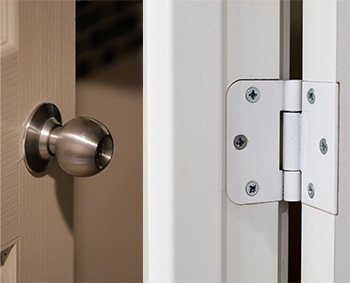Prevent Finger Pinch Injuries in Childcare Facilities

There are numerous risks that exist within a childcare operation. One area that may not get the attention it deserves is the danger associated with doors. The potential for severe injuries to fingers and hands, as a result of being slammed and caught in closing and opening doors, is an important concern that must be identified and addressed. Finger pinch injuries happen very quickly, often before staff can react.
Hidden Hazards
There are muliple areas within childcare facilities with these dangers, including: classroom doors, connecting doors, restroom doors, closet doors, cupboards, cabinets, gates, etc. Children often suffer serious injuries when their fingers are slammed in doors on the handle side or when they are caught in the gaps created on the hinge-sides of the door. It is important to understand that these injuries can occur both when doors are opened and closed.
When fingers are caught in these areas, crushed, fractured, and even amputated fingers can result. The hinge-side of the door often causes the most severe injuries, especially for children 1-2 years old. Older children tend to hurt themselves more often in the handle side of the door.
Reality Moments
- As a door was momentarily opened by a teacher, a child curiously came over and used the door for balance by placing their hand in the open gap on the hinge-side of the door. When the door was closed, the child’s finger was caught in the opening, causing an open break and partial amputation of the tip of their finger. The teacher was preoccupied and was unaware that the child was there.
- A teacher closed an emergency door onto a child’s finger causing a deep laceration and fracture that required surgery. The teacher was unaware that the child was nearby and had quickly put their hand in the way of the door on the handle side of the door.
The National Electronic Injury Surveillance System analyzed door-related injuries for patients ages 17 years and younger in the United States from 1999-2008. An estimated 1,392,451 children received emergency treatment for door-related injuries, which averages approximately 1 injury every 4 minutes in the United States. 41.6% of the children were ages 4 years and younger. The most common mechanism of injury was a “pinch in the door” (54.8%). Patients admitted to the hospital were most frequently treated for amputations (32.0%) or lacerations (25.2%).1

Moments Often Matter
Like other risks young children face everyday, door-related injuries are easily preventable.
- Complete an assessment of your facility to identify doors and other areas that are frequently used by children and contain these hazards.
- Maintain proper staff-to-child ratios to ensure adequate supervision and monitoring.
- Keep children clear of doors and teach them not to play with them. Consider this in all play areas, when children are lining up, and when placing furniture around the room.
- Install finger pinch safety devices wherever doors, cupboards, cabinets and gates are accessible to children. These pinch guards prevent fingers from entering the hinge side of open doors and gates by covering the gap.
- Find the safety devices that work the best for your facility and follow the manufacturer’s instructions for installation, maintenance and routine inspections.
- Educate your staff of the risks associated with doors and the prevention methods for this type of injury.
Understanding these hidden hazards within your classroom along with implementing proper measures can help provide a safe environment for children in your care and help prevent a life changing injury.
